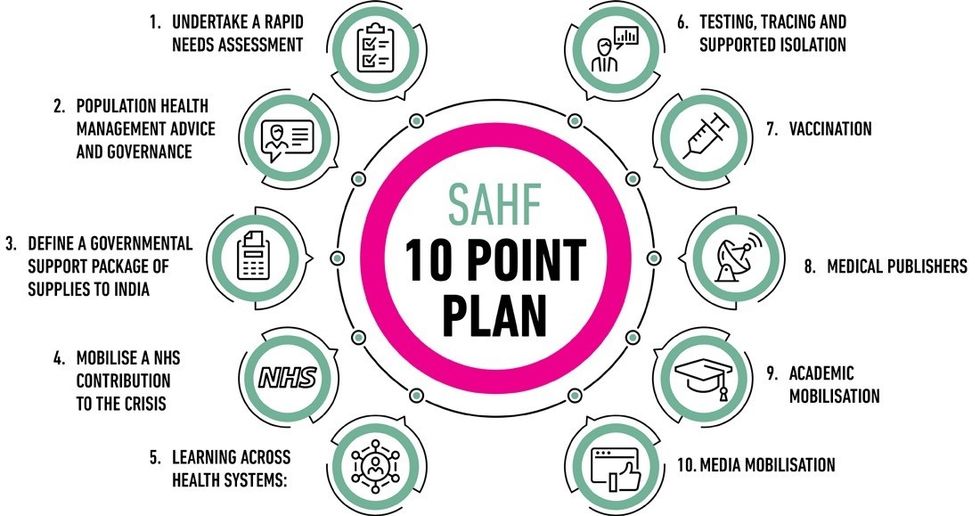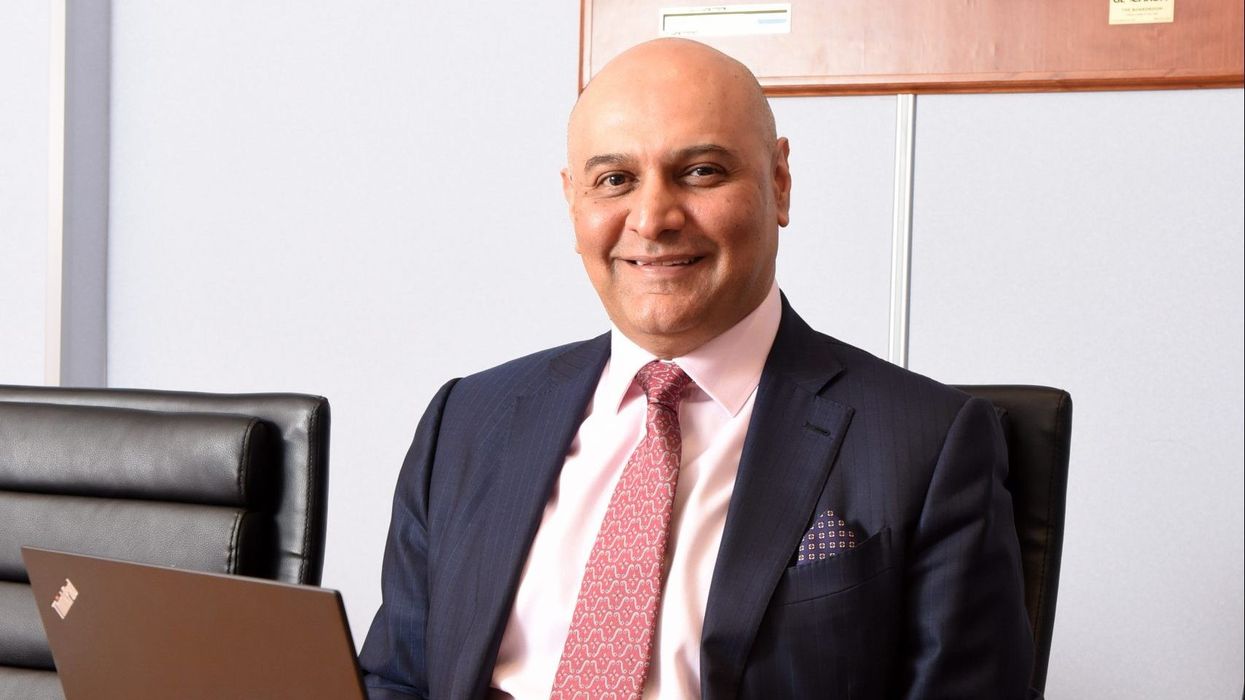By Professor Kiran Patel
Chief Medical Officer, Cardiologist and Chair of Trustees of the South Asian Health FoundationIN RECENT days we have seen devastating scenes in India as desperate citizens attempted to seek healthcare in hospitals which were full to the brim with patients suffering with Covid-19 infection.
Doctors valiantly attempted to treat patients in a healthcare system which is now under stresses India has never before witnessed. Ventilators and drugs were in short supply, leading to the Indian government asking for support from other countries.
In the early hours of last Tuesday (27), a planeload of supplies from the UK landed, a welcome drop of relief in what was a tsunami of illness sweeping the country. We have witnessed similar scenes initially in China and Italy, then in Brazil and now India, but why has India stirred our global conscience like no other?
In India, a country of 1.4 billion people, healthcare can lead to impoverishment. There are abundant anecdotal stories of families becoming embroiled in debt through the out-of-pocket expenses required to pay for healthcare. Government hospitals exist and similar to the NHS, provide healthcare, but the scale of healthcare needed in India cannot be met by the scale of available provision.
In the NHS, where more than a quarter of the workforce is from south Asia, doctors, nurses and managers began to urge the UK government to contribute as much as possible in terms of support for India. Last Wednesday (28), the South Asian Health Foundation (SAHF), a UK charity, published an open letter in the British Medical Journal, calling for action with a 10 point plan.
At an NHS meeting chaired last Tuesday, catalysing a coordinated effort, Professor Kiran Patel started by saying that “we convened because we are more similar than we are different. Covid respects no race, ethnicity or geographical boundary. It does not level, it destroys. Colleagues in India are now beyond crisis and need our support. In a country where the majority of expenditure on healthcare is out of pocket, impoverishment from acute need is real and if Covid does not kill, the post-Covid world will. It is now time for galvanised action and collaboration, not criticism.”
During the first wave of Covid-19, India invoked an exemplary lockdown and only two months ago, the country was seemingly returning to business as usual. Last week, however, saw a phenomenal level of Covid infection sweeping the country, with more than 350,000 new cases per day at one stage – a vast underestimate as the figures account for only those who were tested.
Throughout the week, doctors and members of the Indian consulate have been articulating what India needs. The so-called “needs” assessment ranges from physical needs such as ventilators and oxygen concentrators, testing and vaccination, to supportive measures such as education and webinars. A consortium of NHS and third-sector agencies led by SAHF is launching a series of webinars this week, together with doctors from India, to help spread knowledge on best practice across the country.
The mobilisation of such a Herculean effort is heart-warming. Part of the education will identify best treatments and discourage use of medicines which are not an effective use of resources. At times of crisis, there is sadly misinformation around and the medical advice has to be supported by a strong media machine which disseminates facts and not myths.
If it is not possible to treat mild symptoms at home, patients must seek medical care. Those with breathing difficulties may need more support and should see a doctor. If oxygen is given to use at home, individuals should use it as advised. Often, lying on the front (on the stomach) will help more oxygen get to the lungs.
Criteria-based access to hospital and intensive care unit (ICU) beds is essential in order to make the best use of limited resources. Standardised protocols for access and step down to the most valuable resource of an ICU bed will enable the best chances of survival for as many as possible.
It is time to share and standardise these protocols from across the world. It is heartening to see such information being shared. The National Institute of Health and Care Excellence (NICE) in the UK has made available, free of cost, all Covid-19 related guidance on its website. Gestures like this show that humanity can act as one against a common enemy.
Today India has to not only fight the acute challenges of this wave of Covid-19 but prepare for a massive vaccination programme. A huge challenge of illness and death are likely follow the pandemic. The government should rapidly protect its most vulnerable citizens from such illness and impoverishment by not only vaccinating the population, but also guarding against cost inflation of hospital fees and drug costs as India recovers from the pandemic.
South Asians have succumbed to Covid-19 disproportionately to other ethnic groups. Professor Kamlesh Khunti (also a trustee of SAHF) and his team from Leicester showed that ethnicity was per se, a risk factor for poor outcomes. The inequity is driven not only by ethnicity, but also by social, behavioural and economic factors which culminate in increased exposure to Covid-19 and poorer outcomes due to the impact of comorbidities such as diabetes, obesity and high blood pressure.
Survivors from Covid-19 in India, or those who are lucky enough to avoid infection in the first place, will need to reduce their risk from future infection by managing conditions like diabetes, heart disease and high blood pressure well. India will need trained healthcare staff to provide this care. It is time for a workforce coordinated across the globe, so that rich nations support others in need to make the world a healthier and fairer place. While we acknowledge that all people should have the freedom to migrate and work where they wish, such migration should be coupled with a strong plan to ensure countries are enriched when workers migrate and not impoverished. It was heartening to see the NHS this week pause international nurse recruitment from India in the face of the current crisis.
It is time to address the global health inequity that Covid-19 has exposed, by launching a crusade against the social determinants of disease and non-communicable illnesses which will kill those most vulnerable as the world recovers from the economic and structural devastation of the pandemic. Is it time for a global healthcare fund to prevent, treat and optimise population health outcomes? It is now time for global leaders to define which actions we prioritise to drive equity and prosperity during and following the pandemic.
Professor Kiran Patel is writing on behalf of the SAHF trustees – Kamlesh Khunti, Wasim Hanif, Amitava Banerjee, Harpreet Sood, Vinod Patel, Sarah Ali, Paramjit Gill, Kiran Sehmi, Ranjit Dhillon and Amal Lad.













‘India needs a global plan to recover from Covid-19’